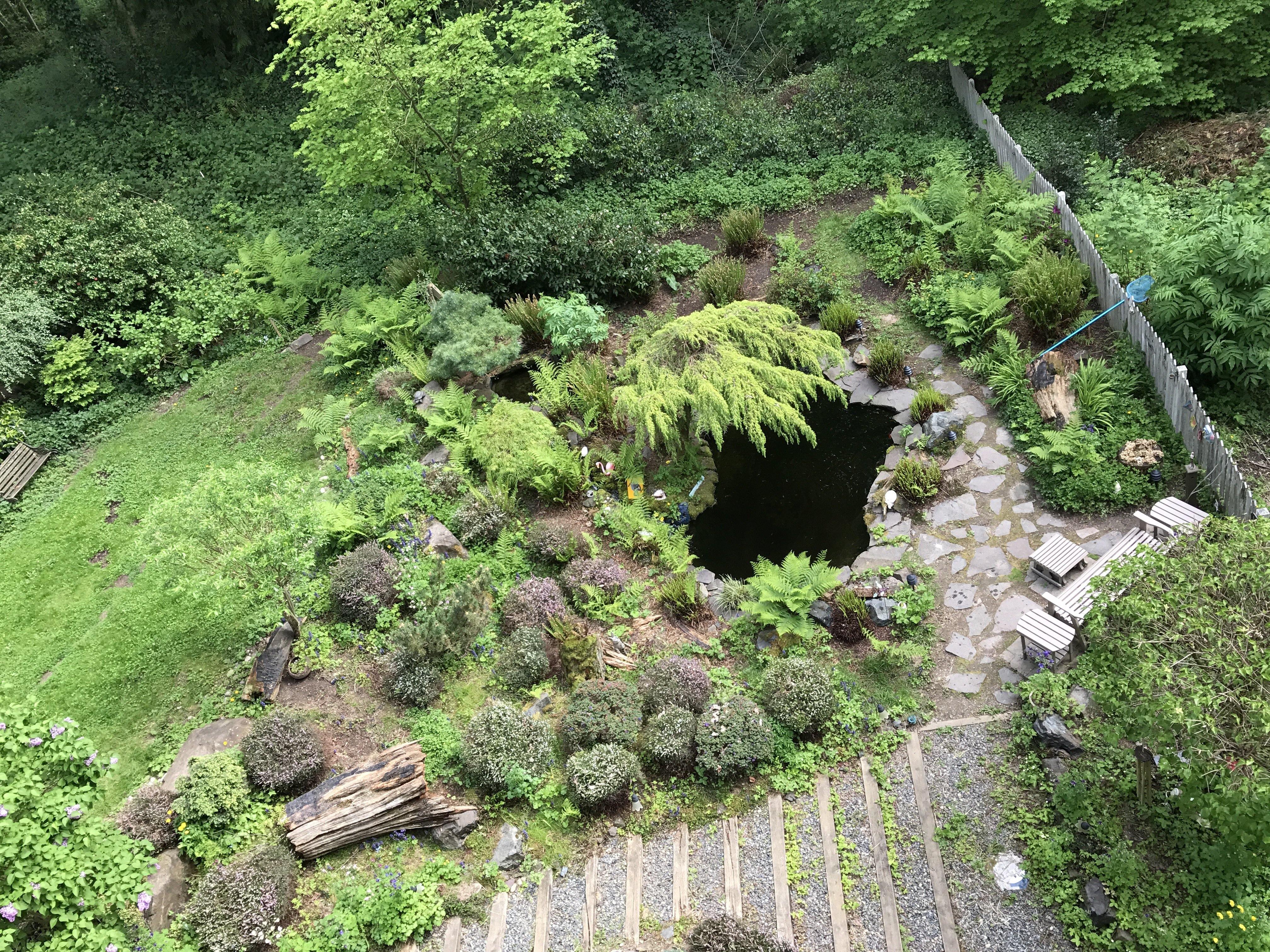Pond Planning: The Main Pool (Article 3)
So you have decided on creating a pond, and have some materials in mind along with a budget, but before creating this water feature, there are a number of factors that need discussing for the main pool:
Location, location, location! Where should you place your pond? This may seem simple enough; all you need is a large area to dig a hole. But there is much more than that. Are there underground pipes or lines? Will the pond get little, some or a lot of sun? Are there lots of trees or such that will add debris to the pond? Are there good vantage points to see the pond (not just for aesthetics, but to see if predators or even children are near the pond)? Do you need to fence in the pond (for safety or code requirement)? Remember, you don’t necessarily need a flat place to dig the pond either. If you have a sloped yard, digging the pond out and throwing the spoil on the downhill slope will create a pond with the added advantage of a higher slope to one side. This would be a perfect place for a waterfall without the need to create an artificial berm for one. A natural gully could lend itself to a ready-made stream widening it at one end for your pond. And of course, ensure to make it easy for you access your pond from all sides and angles and have places for the equipment, plumbing and your pond tools. Choose wisely.
Size and Shape: The main pool can vary endlessly on design – square, round, oval, geometric or amorphous. But in all these cases, how deep are you making the pond and with how much surface area? Why should that matter? Deep ponds with less surface area hold the water temperatures steady while wide shallow ponds will have large swings in temps. Deep ponds are good for fish that will overwinter in the pond staying on the bottom of the pond and makes it harder for predators to catch them, shallow ponds – not so much. However, shallow ponds are easier to clean or retrieve things and have much more sun available to them; just the opposite for deep ponds for obvious reasons. But one of the biggest factors to consider – what will the volume of the pond be? How many gallons of water is important. This is more about overall size, rather than shape. This volume will dictate the size of the pump, filters, plumbing sizes, the amount of chemicals needed to be added on occasion, even how many fish the pond can handle. Larger volumes of water have the advantage of steady water conditions – but need larger equipment. Smaller volumes need smaller equipment, but the water will be susceptible to larger swings in conditions. If you are considering fish, this will not be good for them. Always error on the side of larger volumes if possible.
Laying the Pool Out: Sketch out the general shape of the pond on paper. Most ponders build in shallow shelf areas around the banks to set marginal plant on (6” to 12” below the surface). When planning the shape, most people terrace the banks down to the bottom in a stair step fashion (a foot or two each step) OR have sloped sides. If sloping, depending on the depth, you may want to make deeper shelves in a few places so that you can climb in and out easily. Next, multiply the average length x average width x average depth x 7.48 = gallons. If planning a circular shape, multiply diameter x diameter x average water depth x 5.9 = gallons. This might be a little tricky if you have an amorphous shape or if you are not just digging straight down but rather step down with shallower areas for marginal plants and sloped sides (split the distance on slopes). Treat the shallow areas as one whole pond and do a measurement. Treat the next deeper area as a separate shallower pond with its own measurement and so on; then add them up. Think of it as an upside-down wedding cake. You are measuring each layer with the smallest layer on the bottom and the largest at the surface. It is advised that you make the bottom relatively flat and level with the sweet spot ~3-5’ deep. This estimate will give you an idea of the volume of the main pool. You will need this estimate of gallons to choose and plan your pond components. Use a garden hose to layout the perimeter.
Previous Article: 02: The Pond Life – What is a Pond?
Next Article: 04: Pond Planning – The Main Components
Table of Article Contents and Disclaimer


1 comment
Anonymous
Thanks for sharing Jeff. When I built my first pond, I was trying to maximize the volume of water in the little space that I had, so I dug it super deep… ~5ft deep underneath the waterfall and then all the way to ~7ft at its deepest on the opposite end where the bottom drain sits. Admittedly a little too deep. The advantages as you point out are water stability and preditor protection. However, It is very difficult when I need to vacuum the bottom and to catch things and I do wish I had built in more and wider shelves for plants.